Philip Mechanicus, born April 17, 1889, in Amsterdam [1] and died in October 1944 [2] in the Auschwitz concentration camp, was a Dutch journalist [3] and diarist. [4]

Philip Mechanicus, born April 17, 1889, in Amsterdam [1] and died in October 1944 [2] in the Auschwitz concentration camp, was a Dutch journalist [3] and diarist. [4]

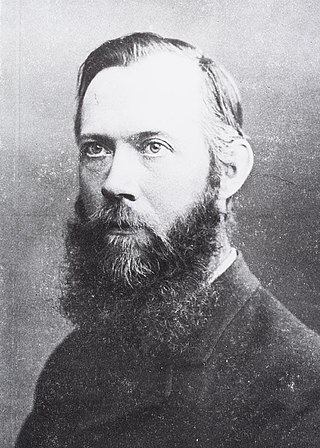
Antonie “Anton” Pannekoek was a Dutch astronomer, philosopher, Marxist theorist, and socialist revolutionary. He was one of the main theorists of council communism.
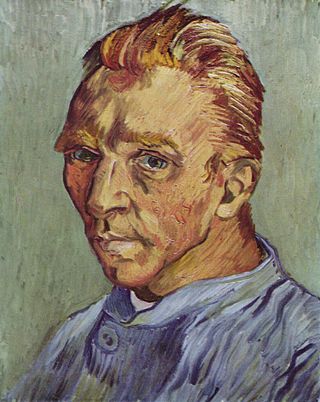
The portraits of Vincent van Gogh (1853–1890) are the self-portraits, portraits of him by other artists, and photographs—one of which is dubious—of the Dutch artist. Van Gogh's dozens of self-portraits were an important part of his œuvre as a painter. Most probably, van Gogh's self-portraits are depicting the face as it appeared in the mirror he used to reproduce his face, i.e. his right side in the image is in reality the left side of his face.
Hans Georg Conon von der Gabelentz was a German general linguist and sinologist. His Chinesische Grammatik (1881), according to a critic, "remains until today recognized as probably the finest overall grammatical survey of the Classical Chinese language to date."
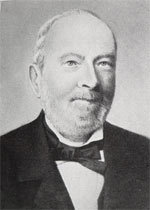
August Ferdinand Howaldt was a German engineer and ship builder. The German sculptor Georg Ferdinand Howaldt was his brother.
Paul van Kempen was a Dutch conductor.

Meijer Isaac de Haan was a Dutch painter. In French the name was written Meyer de Haan.
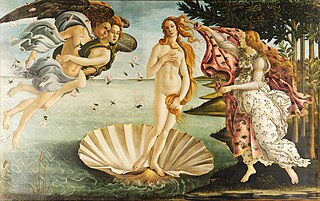
100 Great Paintings is a British television series broadcast in 1980 on BBC 2, devised by Edwin Mullins. He chose 20 thematic groups, such as war, the Adoration, the language of colour, the hunt, and bathing, picking five paintings from each. The selection ranges from 12th-century China through the 1950s, with an emphasis on European paintings. He deliberately avoided especially famous paintings, such as Leonardo da Vinci's Mona Lisa or John Constable's The Haywain. The series is available on VHS and DVD.

Hendrikus Albertus Lorentz was a Dutch explorer in New Guinea and diplomat in South Africa.

Bertrand Philip Sigismund Albrecht, Count of Gronsveld-van Diepenbroick-Impel was a former Dutch envoy in Berlin to Frederick the Great.

A Wheatfield with Cypresses is any of three similar 1889 oil paintings by Vincent van Gogh, as part of his wheat field series. All were exhibited at the Saint-Paul-de-Mausole mental asylum at Saint-Rémy near Arles, France, where Van Gogh was voluntarily a patient from May 1889 to May 1890. The works were inspired by the view from the window at the asylum towards the Alpilles mountains.

Jacob (Jacques) Presser was a Dutch historian, writer and poet who is known for his book Ashes in the Wind on the history of the persecution of the Jews in the Netherlands during World War II. Presser made a significant contribution to Dutch historical scholarship, as well as to European historical scholarship.
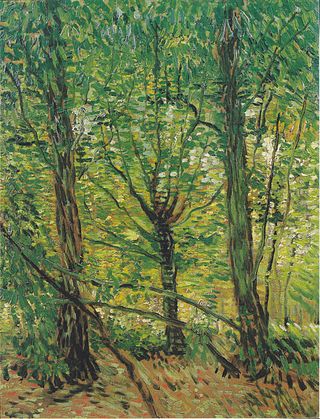
Trees and Undergrowth is the subject of paintings that Vincent van Gogh made in Paris, Saint-Rémy and Auvers, from 1887 through 1890. Van Gogh made several paintings of undergrowth, a genre of painting known as sous-bois that was brought into prominence by artists of the Barbizon School and the early Impressionists. The works from this series successfully use shades of color and light in the forest or garden interior paintings. Van Gogh selected one of his Saint-Rémy paintings, Ivy (F609) for the Brussels Les XX exhibition in 1890.
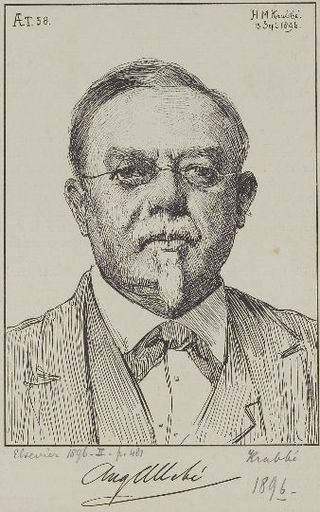
August Allebé was an artist and teacher from the Northern Netherlands. His early paintings were in a romantic style, but in his later work he was an exponent of realism and impressionism. He was a major initiator and promoter of Amsterdam Impressionism, the artist's association St. Lucas, and the movement of the Amsterdamse Joffers. Amsterdam Impressionism – sometimes referred to by art historians as the School of Allebé – was the counterflow to the very strong Hague School in the movement of Dutch Impressionism. As a professor at the Royal Academy of Amsterdam he fostered a cosmopolitan attitude toward art and the promotion and motivation of his students, and provided a significant stimulus to developments in modern art.

Enclosed Field with Peasant is an oil painting by Dutch artist Vincent van Gogh, painted around 12 October 1889. The Size 30 painting, measuring 73 cm × 92 cm, depicts a scene of a ploughed field near the asylum at Saint-Rémy-de-Provence, with a lilac bush, a peasant carrying a wheatsheaf, several buildings, and the Alpilles mountains rising behind, with a small patch of sky. Van Gogh considered it a pendant painting to The Reaper executed earlier in 1889. It is currently part of the permanent collection at the Indianapolis Museum of Art.

View of the Asylum and Chapel of Saint-Rémy is an oil on canvas painting by Vincent van Gogh that he painted in autumn 1889 at Saint-Rémy, France, where he had voluntarily incarcerated himself in a lunatic asylum.

Jan Hillebrand Wijsmuller was a Dutch painter. He belongs to The 2. Golden Age of Dutch Painting.

The Van Horne House is a historic building at 941 East Main Street near Bound Brook in Bridgewater Township, Somerset County, New Jersey. The house was built c. 1750 and also known as Phil's Hill, after its owner, Philip Van Horne. It served as the headquarters for American General Benjamin Lincoln in 1777, during the American Revolutionary War, in particular the Battle of Bound Brook. Later, it served as the headquarters for American General William Alexander, Lord Stirling during the second Middlebrook encampment (1778–79). The house, on the early-18th-century Old York Road that connected Philadelphia to New York City, was a New Jersey landmark during the war. Since 2002, the Heritage Trail Association has used the house as its headquarters, including an exhibit space. It was added to the National Register of Historic Places on March 8, 2002, for its locally significant Colonial Revival architecture from 1937 to 1944.
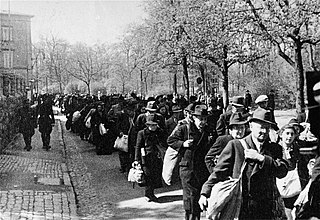
The question of how much Germans knew about the Holocaust while it was ongoing continues to be debated by historians. With regards to Nazi Germany, some historians argue that it was an open secret amongst the population, whilst others highlight a possibility that the German population were genuinely unaware of the Final Solution. Peter Longerich argues that the Holocaust was an "open secret" by early 1943, but some authors place it even earlier. However, after the war, many Germans claimed that they were ignorant of the crimes perpetrated by the Nazi regime, often using the stereotypical phrase "Davon haben wir nichts gewusst".

Bernhard Mayer (1866–1946) was a German fur trader, anarchist, patron and art collector.